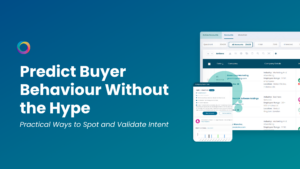Only 33% of B2B companies are using blogs, despite 77% of internet users reading them regularly. Studies have shown that internet users in the US spend 3 x more time on blogs than they do on email.
This leaves a huge untapped opportunity wide open for you to utilise. Stand out from your competitors and offer a regularly updated blog that’s packed with valuable information that your audience will appreciate.
Top Tips for B2B Blogging
- Make your posts stand out. Keep your titles catchy and clickable.
- Include images and videos within your posts to attract more readers.
- The more helpful and informative your posts are, the more likely it is that your readers will share it.
- Don’t just wait for readers to come to you. If your budget allows, research different ad types to see what might work best for your blog.
- Keep your word count over 1,000 words for maximum ranking opportunities in Google.
The Growing Power of B2B Blogging
Writing a blog is a great marketing tactic for a small company in a competitive field. It’s an excellent way to establish a strong online identity and stand out from the crowd. A good blog strategy can ensure that you publish engaging content on a regular basis, helping to raise awareness of your brand and also generate leads and sales. In this guide, we will look at how to put together a plan to develop your blog, how to measure its progress and what steps to take to improve its performance. We will also consider how to find ideas for blog content and which channels may be the most effective at attracting readers.
Blog Goals
A good blog strategy starts with a strong understanding of what you would like to achieve.
Consider what you want to use your blog to achieve and then set realistic, measurable targets to aim for. This could involve drawing traffic to your website, generating a certain amount of leads, registering people for a newsletter or event or much more. Spend some time establishing your main goals for the blog and try to identify your priorities for your blog as a marketing channel.
This approach can help you focus when you are thinking about the frequency of your posts, the length of posts and the tone and style of your content.
Consider your Audience
Who are your audience? What content will interest them?
Spend some time thinking about who will read your blog. Who are your ideal customers? What kind of content do you think would interest them?
One of the best ways to get an idea of your audience is to consult any analytics you have from your website or social media, which will give you a general idea of the typical age, gender, industry and educational background of your ideal customer. You should also consult reports on your industry to see if there are any trends when it comes to buyer behaviour.
You can then use this information to create customer personas, which are general representations of certain types of customers. This exercise can prompt you to see things from the perspective of a customer, helping to create blog content that suits their interests and helps them to overcome challenges.
Research, research, research
Check out the competition when thinking about the kind of content you’d like to write for your blog. Make sure to look not only at the style and tone, but also the length and frequency of posts.
This research can be useful to get an idea of how to begin, but you want to ensure that your company is clearly differentiated from your competition. Be on the lookout for gaps in the content of competitors that you can maybe capitalise on.
Keep in mind that you want to use your content to build a relationship with your audience. Your main goal is to become the go-to blog for any concerns or questions that potential customers may have.
Becoming a trusted source in information in this way not only helps to create loyal customers but can help you find new customers through referrals and recommendations.
Writing Content for your B2B Blog
When it comes to writing your content, try and bear in mind what appeals to you and what doesn’t whenever you’re reading blog posts.
Keep your content short – This makes it much easier for readers to digest the information. It also makes practical sense when you consider that a significant proportion of potential customers will be reading your blog on a mobile device like a tablet or phone.
Keep it relevant – although a few fun posts here and there are good to keep things fresh and interesting, always remember that content which is genuinely helpful will always attract more people in the long run.
Include Call-To-Actions – Be sure to include a link to your website or contact details in your blog and encourage readers to take that next step to becoming a customer.
Don’t forget about images and videos
Make sure that your blog looks interesting by including some colourful, engaging images. You can also use Photoshop or similar software to create your own images.
Just like written content, try and do a little research to see what kind of images work best with your target audience, whether it be fun illustrations or sleek business-like photos.
Animated gifs and videos can also be good tools for grabbing a reader’s attention.
It can be time-consuming to create these yourself, but they can be particularly attractive to audiences as they demonstrate a level of effort and marketing expertise that your competitors may not have.
Distributing your blog
Creating an engaging blog with interesting content is great, but you also need to have a think about how you are going to get your message out there.
Using the right keywords and format can help your blog posts rank on search engines, yet this is just one, particularly difficult, method of attracting readers.
Put some thought into how you promote your blog posts on social media. Take some intriguing quotes and lead your post with them. This works even better if you can work the quote into a colourful image.
Another good tactic is to split the blog up and send short sections in emails to your mailing list, encouraging contacts to click through to the full post.
Blog Maintenance
With your plans all in place, the final step of your strategy is to figure out how the blog will be maintained going forward.
This involves establishing who will write, edit and upload the content, as well as putting together a calendar of how frequently blogs will be published, on what days and at what time of day.
There are a lot of components that go into making a blog successful, so you may want to designate different tasks to different team members.
For example, one team member could write the blogs and look after SEO optimisation, while another would take the lead on design and manage post scheduling on social media.
Measuring blog success
Once your blog is up and running, think about how you will go about measuring the performance of your blog against your objectives.
Although there will be metrics like reach and engagements that you will want to pay the most attention to, don’t neglect to look at the information available when it comes to things like bounce rate and data on how readers find your blog.
Organise regular meetings (perhaps monthly) to review the progress of the blog and tweak your strategy as you build up a clearer picture of what appeals to your audience.
Don’t expect your blog to be an overnight success. It takes time to build a reputation as a trusted source of information, while establishing your keywords in search engines can also require some patience. The trick is to steadily produce content and look out for small regular gains that you can continue to build on.
More from Zymplify’s Blog
What kind of content should I be producing? A quick guide to Content Marketing
Content Marketing – is it worth your time and effort?
4 of the Scariest Content Marketing Myths and the Truth behind them



